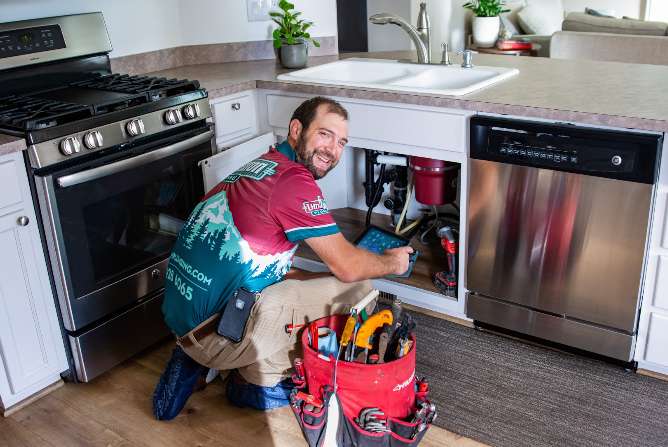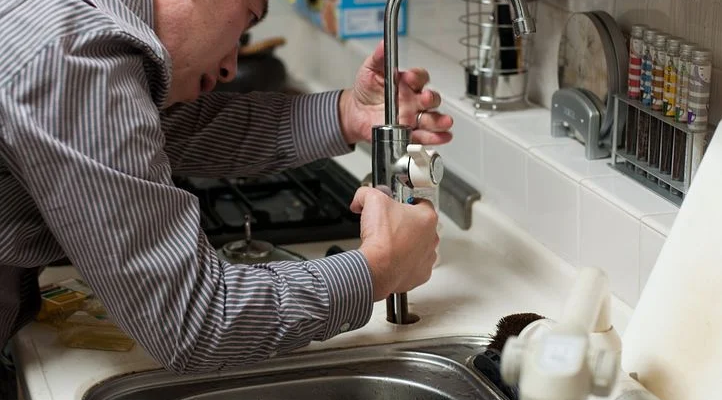Have you been searching for content concerning DIY vs. Professional Plumbing Repairs: When to Call a Pro?

Intro
Pipes problems can range from minor inconveniences to major headaches, commonly prompting house owners to decide between dealing with the problem themselves or contacting a specialist plumbing. Knowing when to DIY and when to seek professional help can conserve time, cash, and stop prospective disasters. This article checks out the factors to consider when making this crucial decision.
Advantages of Do It Yourself Plumbing
Tackling pipes tasks on your own can be gratifying in several methods, especially for less complex jobs.
Cost Savings
Do it yourself pipes projects often save cash by avoiding specialist service charge. Jobs like fixing small leakages, changing taps, or setting up brand-new showerheads are examples where homeowners can take care of repair work without employing a plumbing professional.
Skill Improvement
Participating in DIY pipes provides an opportunity to find out and boost useful skills. Standard tasks encourage home owners to understand their pipes systems far better and obtain confidence in taking care of small repair services independently.
Dangers of Do It Yourself Pipes
While do it yourself projects use benefits, specific threats need to be very carefully thought about prior to attempting repair work.
Intricacy of Tasks
Some pipes concerns call for specific knowledge and tools beyond typical home owner abilities. Mishandling intricate issues can lead to more damage and pricey repair services.
Safety Worries
Working with pipes systems involves threats such as exposure to water damages, potential for electrical dangers, and handling tools inaccurately. Safety preventative measures must be observed to avoid mishaps and ensure effective repair work.
Indicators to Call a Professional Plumbing
Identifying when a plumbing problem exceeds do it yourself capacities is critical to preventing worsening troubles.
Signs of Facility Issues
Examples include:
Trigger expert treatment is needed to attend to these problems properly and decrease damages.
DIY Plumbing Tips
For successful DIY pipes, it's vital to be prepared with the right devices and adhere to appropriate procedures.
Standard Tools and Materials
Trick tools for do it yourself plumbing:
Step-by-Step Guides
Clear instructions guarantee risk-free and effective DIY repair work:
Selecting the Correct Time to DIY
Identifying when to take on pipes tasks yourself calls for examining both the complexity of the concern and personal comfort degrees.
Analysis Checklist
Consider:
When to Definitely Call an Expert
Specific scenarios demand instant experienced attention to avoid substantial damage or security threats.
Examples include:
Searching for and Hiring a Specialist Plumbing Technician
Selecting a qualified plumbing makes sure reliable solution and assurance in solving plumbing issues.
Criteria for Option
Aspects to consider:
Price Analysis: do it yourself vs. Professional Providers
Comparing the economic implications of DIY initiatives versus specialist pipes services assists in making educated choices.
Financial Considerations
Evaluate:
Verdict
Determining whether to do it yourself or call an expert plumbing hinges on recognizing the complexity of plumbing concerns and personal abilities. By evaluating the advantages and threats, property owners can make informed selections that advertise efficient maintenance and guard their homes from plumbing disasters.
DIY Plumbing Projects: What Homeowners Can Do and When to Call a Professional
Welcome to our comprehensive guide on DIY plumbing projects. In this blog post, we aim to empower homeowners with the knowledge and skills to tackle basic plumbing tasks around the house. From unclogging drains to fixing a leaky faucet, we’ll walk you through step-by-step instructions on how to handle these common issues.
However, not all plumbing problems can or should be solved with a DIY approach. Recognizing when a problem is beyond your skill level and requires professional intervention is just as important as knowing how to perform basic tasks. We’ll also discuss the signs that indicate it’s time to put down your tools and pick up the phone to call a professional plumber. By understanding when to DIY and when to call a professional, you can save time, avoid potential disasters, and ensure your home’s plumbing system remains in top shape.
Understanding Plumbing Basics
Before we dive into the DIY projects, let’s take a moment to understand the basics of your home’s plumbing system. A typical residential plumbing system consists of two major components: the water supply system, which brings fresh water into your home, and the drainage system, which removes waste water. These systems are made up of a network of pipes, valves, and fixtures that work together to deliver clean water and dispose of waste efficiently.
Regular maintenance of your plumbing system is crucial to prevent minor issues from escalating into major problems. This includes tasks like checking for leaks, removing minor clogs, and ensuring your pipes are insulated for winter. By performing these tasks regularly, you can extend the lifespan of your plumbing system, save money on water bills, and maintain the comfort and hygiene of your home.
In the following sections, we’ll explore some common DIY plumbing projects that homeowners can handle, as well as situations that require the expertise of a professional plumber. Whether you’re a seasoned DIY enthusiast or a beginner, this guide will provide you with valuable insights into the world of home plumbing.
DIY Plumbing Projects Homeowners Can Handle
Plumbing may seem intimidating, but there are several tasks that homeowners can confidently tackle with a little guidance and the right tools. Here are a few common issues you might encounter and how to address them.
Unclogging Drains
Use a Plunger: This is your first line of defense. A good old-fashioned plunger can dislodge the obstruction and clear the drain in many cases. Try a Plumber’s Snake or Hand Auger: If the plunger doesn’t work, a plumber’s snake or hand auger can reach deeper into the pipe to break up the clog. Use a Drain Cleaner: If physical methods fail, a chemical drain cleaner can dissolve the clog. However, use these products sparingly as they can damage your pipes if overused.

I'm very excited about and I am hoping you appreciated the blog entry. Make sure you set aside a second to distribute this write-up if you appreciated it. I truly appreciate your readership.
Book A Service